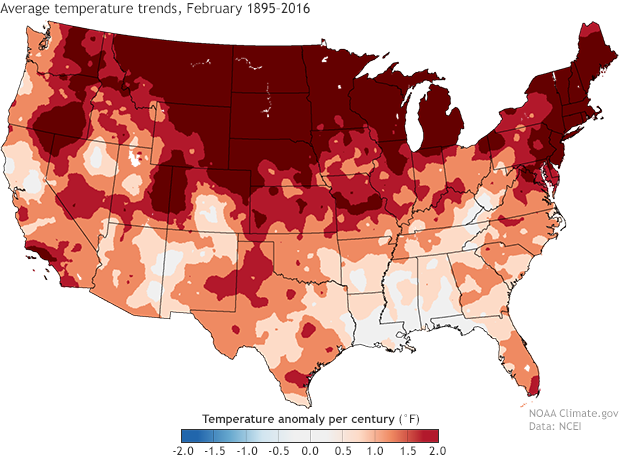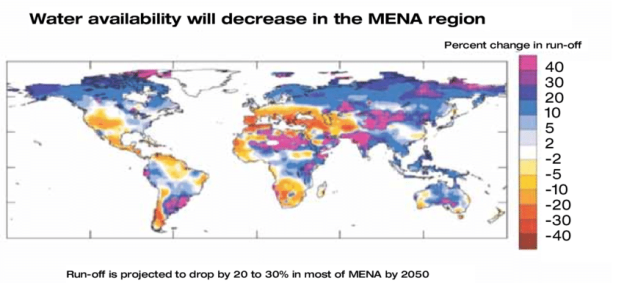The impact of climate change has already manifested in various social, economic, and environmental domains. Among these, alterations in water resources and rivers are particularly significant. Additionally, the global drylands pose a formidable challenge to human societies in the current century. The availability of water on the continents is of utmost importance for various aspects such as human health, economic activity, ecosystem function, and geophysical processes. Due to the temperature-dependent nature of the saturation vapor pressure of water in the atmosphere, alterations in the worldwide water cycle are anticipated as a result of climate change.
Various types of data and methodologies are employed to analyze river discharge. The present study utilizes discharge data, climatic data, and a digital elevation model derived from the Shuttle Radar Topography Mission. The utilization of mission data and Copernicus Land Product land cover information is crucial in the analysis of land cover.
Keyword: climate change, drylands, water availability, River Discharge
- Introduction
The phenomenon of climate change is attributed to the escalation of greenhouse gas emissions. The absorption of infrared rays by certain gases restricts the typical energy flow, thereby contributing to the phenomenon of climate change. The current climate change is considered to be the most significant event of the past millennium ( Climate Change 2022 , n.d.). Despite extensive research, there remains considerable uncertainty regarding the magnitude and impact of this phenomenon, particularly at the regional level. This is due in part to the delayed response of the oceans, which can mask the effects of greenhouse gas emissions on surface temperatures fig.1.

Fig. 1. Mean temperature during the month of February over the period of 1987 to 2016. Source: https://www.climate.gov/news-features/blogs/beyond-data/mapping-us-climate-trends
The persistence of climate change for extended periods, despite the stabilization of atmospheric gas concentrations, is a well-documented phenomenon. The phenomenon of climate change exerts a substantial influence on the global environment. It is projected that the correlated phenomenon of global warming will result in an increase in sea levels ranging from 9 cm to 88 cm by the year 2100, subsequently leading to occurrences such as floods and other related events (Faqiri, 2015). Vertical shifts in climatic zones can have detrimental effects on managed ecosystems such as forests, deserts, and pastures, ultimately leading to the extinction of various distinct species. Numerous studies conducted globally have examined the variability of river discharge and its correlation with contemporary climate change over the past few decades. Climate change and human activity are two major factors that drive alterations in hydrological patterns. The hydrological regime is notably affected by climate change, specifically alterations in precipitation and temperature. Recent climate change has already had an impact on the global hydrological cycle. In certain regions, the aforementioned impacts have led to alterations in the periodicity of river currents and a rise in the occurrence and intensity of both floods and droughts. The rise in water temperatures in rivers and lakes, attributed to global warming, coupled with alterations in river flow patterns, would exert a substantial influence on freshwater ecosystems (Trbic et al., 2021). Within this particular context, the primary challenge pertains to identifying the optimal approach for mitigating the root cause of climate change, namely, the emission of greenhouse gases. Consequently, suggested resolutions to the predicament of climate change prioritize the optimal utilization of human creativity, scientific advancements, technological innovations, corporate influence, and governmental jurisdiction to mitigate the emission of greenhouse gases. Additionally, these solutions aim to adapt to the severe consequences of climate change, in order to avert an impending and collective catastrophe (Cornell & Gupta, 2019).
- Methodology
For analyzing the river discharge different data sets and methodology have been used.
2.1 Discharge Data
These data sets can be found in the National and International Meteorological data bases, as well as in publications that have been published. (Wetterhall, 2019).
2. 2 Climatic Data
The gathering of pertinent data is required in order to have a proper understanding of the temperature of river discharge and the patterns of precipitation. At the moment, data from high-resolution reanalyzes are available to be used and can be accessed in locations that have a limited amount of data available. As part of the Inter-Sectoral Impact Model Intercomparison Project (ISIMIP3a), the CHELSA V21 and CHELSA-W5E5 datasets were developed to meet the demand for observational climatic input data required for the impact assessments being conducted during Phase 3a of the project (Karger et al., 2021).
Digital Elevation model from Shuttle Radar Topography Mission data
The Endeavour space shuttle conducted the Shuttle Radar Topography Mission (SRTM) during a period spanning from February 11 to February 22 in the year 2000. NASA and NGA participated in a global initiative aimed at gathering radar data to create the first comprehensive global dataset of land elevations. The aforementioned information was collected in the context of the International Radar Topography endeavour (IRTP) (Earth Resources Observation and Science (EROS) Center, 2017).
2.4. Land cover : Copernicus Land Product Land cover information
Land is a highly prized asset for individuals. The increasing globalization of the world's economy and population growth are contributing to significant environmental impacts and placing unparalleled demands on land management. The precise characterization of land cover and land-use change is of utmost importance in order to gain a comprehensive understanding of their impacts and to take appropriate measures. Furthermore, it is imperative that there is availability of data pertaining to vegetation characteristics and land cover. The utilization of satellite remote sensing as a means of gathering data for the observation of vegetation dynamics has become increasingly prominent since the 1970s. However, the acquisition of dependable, long-term in situ observations for extensive regions remains a challenging task. Satellite systems such as Landsat, the National Oceanic and Atmospheric Administration's NOAA, AVHRR, and MODIS offer extensive global-scale reflectance data records over extended periods (Buchhorn et al., 2020).
2.5. Hydrologic Models.
The selection of an appropriate model is typically based on a foundational understanding of the goals and traits of the system to be modeled. Prior to selecting a hydrologic model, it is imperative to consider the following factors. (Eslamian, 2014):
— Modeling purposes, including hydrological forecasting, analyzing the effects of climate change, and determining the extent to which humans influence the hydrological regime.
— The hydrological elements that have to be modeled, such as the water quality, the monthly or annual discharges, the daily discharges, and the floods.
— The simplicity of the model, which relates to the number of model parameters that need to be optimized and the ease with which a model may be applied to situations that occur in the actual world.
-
Results and Discussion
- Water Availability and Climate Change
It is expected that climate change will cause alterations in the hydrological regimes and temperature of rivers. The impact of this phenomenon will have direct implications on freshwater ecosystems, water quality, and human water consumption. Several macro-scale hydrological modeling studies have been carried out previously to assess the impact of climate change on water availability at continental scales (van Vliet et al., 2013). According to UN Water “ . Water availability is becoming less predictable in many places, and increased incidences of flooding threaten to destroy water points and sanitation facilities and contaminate water sources. In some regions, droughts are exacerbating water scarcity and thereby negatively impacting people’s health and productivity ” . On the continents, water availability is critical for human health, economic activity, ecosystem function, and geophysical processes.
Due to the temperature-dependent nature of the saturation vapor pressure of water in the atmosphere, alterations to the global water cycle are anticipated as a result of climate change. The alterations in surface hydro climate caused by warming exhibit intricate and ambiguous regional patterns in comparison to temperature changes. It is anticipated that there will be both regional increments and decrements in precipitation and runoff. Research indicates that cereals such as rice, wheat, sorghum, barley, oat, and maize, as well as long-lived woody species like holm oak, experience pollen sterility due to low water availability (Milly et al., 2005). The anticipated consequences of climate change include alterations to both the quantity and quality of water resources. The phenomenon of climate change has the potential to modify the frequency and magnitude of precipitation, temperature, and streamflow, thereby challenging the resilience of current infrastructure and amplifying the likelihood of hydrological extremes such as droughts and floods. These changes have significant implications for the hydrological cycle at both regional and global scales. The effects are likely to be intensified by demographic, economic, environmental, social, and technological factors. The investigation of the magnitude and importance of modifications in the hydrological cycle caused by climate change and their resulting impact on water accessibility is a topic of considerable concern for environmental and water resource professionals worldwide. Numerous investigations are underway on a global, local, and regional scale to enhance comprehension of water accessibility amidst the impact of climate change (Pandey et al., 2020). As an example, consider the impact that climate change will have on the availability of water in the Middle East and North Africa in the year 2050 fig. 2.

Fig. 2. The availability of water in the Middle East and North Africa because of climate change
Source: https://www.researchgate.net/publication/248391569_Mapping_of_Climate_Change_Threats_and_Human_Development_Impacts_in_the_Arab_Region
3. 2. Dryland and climate change
The atmosphere above arid regions is frequently characterized by a strong demand for moisture, yet the amount of precipitation received is inadequate to meet this requirement. Aridity refers to a state of persistent water scarcity that is strongly associated with intense solar radiation, elevated temperatures, substantial potential evapotranspiration, and reduced atmospheric moisture. The term is also utilized to denote arid regions, as per the research conducted by (Huang et al., 2017). Furthermore, recent research indicates that arid land ecosystems are undergoing substantial adjustments in response to alterations in climate conditions. (Rutherford et al., 2017) have predicted that drylands will experience substantial alterations in temperature and precipitation patterns, which could potentially accelerate the extinction of fundamental species within bio crust communities. Table 1 displays a number of prevailing challenges in dryland regions worldwide .
Table 1
Current challenges in drylands around the world. Source: Stewardship of Future Drylands and Climate Change in the Global South: Challenges and Opportunities for the Agenda 2030
|
Challenges |
Human population growth |
|
Conversion of key rangeland resources to agricultural uses and groundwater exploitation |
|
|
Sedentarization of pastoralists and other changes in traditional livelihoods |
|
|
Migration |
|
|
Privatization of communal land |
|
|
Expanding urbanization |
|
|
Expansion of infrastructure for renewable energy generation and intensive agriculture |
|
|
Extraction of fossil fuels |
|
|
Expansion of mining |
|
|
Overgrazing by domestic livestock |
|
|
Invasive species |
|
|
Proliferation of water development |
|
|
Aquifer overexploitation |
|
|
Imposed or inadequate conservation management plans |
|
|
Inappropriate restoration and/or afforestation projects to enhance carbon capture |
|
|
Loss of local and indigenous knowledge |
|
|
Increased frequency of droughts |
3.3. Climate change and ecosystems
The phenomenon of climate change can exert noteworthy effects on various ecosystems, particularly those reliant on the flow of rivers. Alterations in river flow patterns and water availability can have significant impacts on aquatic ecosystems, specifically. Alterations in river discharge have the potential to impact various aspects of water quality, including temperature, sediment, and nutrient levels, as well as the temporal patterns of aquatic species' life cycles, reduced river discharge has the potential to impact riparian ecosystems, which serve as intermediary zones between aquatic and terrestrial habitats. Riparian zones offer crucial ecological niches for a diverse array of fauna, encompassing avian, mammalian, and reptilian taxa. Alterations in the hydrological regime of rivers can result in modifications to the physical structure and composition of riparian zones, thereby impacting the ecological well-being of these systems.
- Conclusion
The present study examines the phenomenon of climate change and its ramifications on the global environment, with a specific focus on the effects on river discharge and freshwater ecosystems. Furthermore, there is a challenge in determining the most effective strategy for addressing the underlying cause of climate change, namely the release of greenhouse gases. Moreover, climate change stands out as the most noteworthy occurrence of the previous millennium, and its principal cause is the amplification of greenhouse gas emissions. The phenomenon of delayed ocean response can lead to uncertainty regarding the impact and magnitude of greenhouse gas emissions on surface temperatures, particularly at a regional level. This is due to the masking effect that the oceans can have on these emissions. The modifications in hydrological patterns, which result in changes in the periodicity of river currents and an increase in the frequency and severity of floods and droughts, are primarily influenced by climate change and human activity. The aforementioned impacts are likely to have a significant effect on freshwater ecosystems.
The methodology employed for the analysis of river discharge entails the utilization of discharge data, climatic data, digital elevation models, land cover information, and hydrologic models. The text emphasizes that the process of selecting a suitable hydrologic model is generally predicated on a fundamental comprehension of the objectives and characteristics of the system under consideration, including but not limited to hydrological prediction, evaluation of the impacts of climate change, and assessment of anthropogenic influences on the hydrological regime. The parsimony of the model and the requisite hydrological components that necessitate modeling must also be taken into account.
References:
- Buchhorn, M., Lesiv, M., Tsendbazar, N.-E., Herold, M., Bertels, L., & Smets, B. (2020). Copernicus Global Land Cover Layers—Collection 2. Remote Sensing, 12(6), 1044. https://doi.org/10.3390/rs12061044
- Climate Change 2022: Impacts, Adaptation and Vulnerability. (n.d.). Retrieved April 26, 2022, from https://www.ipcc.ch/report/ar6/wg2/
- Cornell, S. E., & Gupta, A. (2019). Is climate change the most important challenge of our times? In M. Hulme (Ed.), Contemporary Climate Change Debates (1st ed., pp. 6–20). Routledge. https://doi.org/10.4324/9780429446252–2
- Earth Resources Observation And Science (EROS) Center. (2017). Shuttle Radar Topography Mission (SRTM) 1 Arc-Second Global [Tiff]. U. S. Geological Survey. https://doi.org/10.5066/F7PR7TFT
- Eslamian, S. (Ed.). (2014). Handbook of Engineering Hydrology: Modeling, Climate Change, and Variability (0 ed.). CRC Press. https://doi.org/10.1201/b16683
- Faqiri, N. (2015). Mitigation and management of hydro metrological disasters. Kabul University.
- Huang, J., Li, Y., Fu, C., Chen, F., Fu, Q., Dai, A., Shinoda, M., Ma, Z., Guo, W., Li, Z., Zhang, L., Liu, Y., Yu, H., He, Y., Xie, Y., Guan, X., Ji, M., Lin, L., Wang, S., … Wang, G. (2017). Dryland climate change: Recent progress and challenges: Dryland Climate Change. Reviews of Geophysics, 55(3), Article 3. https://doi.org/10.1002/2016RG000550
- Karger, D. N., Lange, S., Hari, C., Reyer, C. P. O., & Zimmermann, N. E. (2021). CHELSA-W5E5 v1.0: W5E5 v1.0 downscaled with CHELSA v2.0 (1.0) [Data set]. ISIMIP Repository. https://doi.org/10.48364/ISIMIP.836809
- Milly, P. C. D., Dunne, K. A., & Vecchia, A. V. (2005). Global pattern of trends in streamflow and water availability in a changing climate. Nature, 438(7066), 347–350. https://doi.org/10.1038/nature04312
- Pandey, V. P., Dhaubanjar, S., Bharati, L., & Thapa, B. R. (2020). Spatio-temporal distribution of water availability in Karnali-Mohana Basin, Western Nepal: Climate change impact assessment (Part-B). Journal of Hydrology: Regional Studies, 29, 100691. https://doi.org/10.1016/j.ejrh.2020.100691
- Rutherford, W. A., Painter, T. H., Ferrenberg, S., Belnap, J., Okin, G. S., Flagg, C., & Reed, S. C. (2017). Albedo feedbacks to future climate via climate change impacts on dryland biocrusts. Scientific Reports, 7(1), 44188. https://doi.org/10.1038/srep44188
- Trbic, G., Popov, T., Djurdjevic, V., Milunovic, I., Dejanovic, T., Gnjato, S., & Ivanisevic, M. (2021). Climate Change in Bosnia and Herzegovina According to Climate Scenario RCP8.5 and Possible Impact on Fruit Production. Atmosphere, 13(1), 1. https://doi.org/10.3390/atmos13010001
- van Vliet, M. T. H., Franssen, W. H. P., Yearsley, J. R., Ludwig, F., Haddeland, I., Lettenmaier, D. P., & Kabat, P. (2013). Global river discharge and water temperature under climate change. Global Environmental Change, 23(2), 450–464. https://doi.org/10.1016/j.gloenvcha.2012.11.002
- Wetterhall, F. (2019). River discharge and related historical data from the European Flood Awareness System [Data set]. ECMWF. https://doi.org/10.24381/CDS.E3458969







